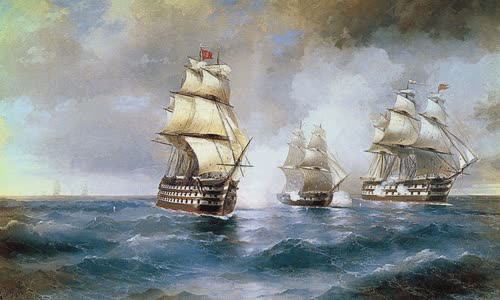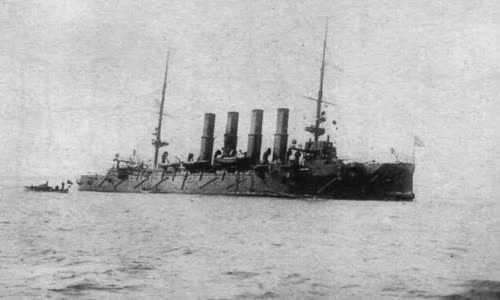Facing major challenges, sometimes "holding death", the Russian navy did not back down, as in the battle of the Mercury or Varyag.
According to Russian historian Boris Egorov, the navy's first memorable landmark was the battle of the Mercury sailboat.

The Mercury was sandwiched between two Turkish warships during the Russo-Turkish War of 1829 Photo: Ivan Aivazovsky
The unequal battle took place on May 26, 1829 near the Bosphorus, one of the developments of the Russo-Turkish War.
Shtandart and Orfey sails successfully escaped the siege.
Mercury is not equipped to deal with fierce naval battles.
Despite that, Captain Aleksandr Kazarsky reported to Admiral Aleksey Greyg that "all agreed to take every last possible measure", alluding to the possibility of sinking the ship so that it would not fall into its hands.
The Russian sailors aboard the Mercury tried to aim at the masts and ropes on the enemy ships, preventing them from moving.
Even the Turkish side recognized the courage of the Russian soldiers in the battle.
The navy's second memorable "death" journey, according to Egorov, belonged to the cruiser Varyag during the Russo-Japanese War (1904 - 1905).
The conflict erupted on February 9, 1904, when a group of 14 Japanese cruisers and bombers surrounded South Korea's Chemulpo port (now Incheon), where the armored cruiser Varyag and artillery
Admiral Uryu Sotokichi of the Imperial Japanese Navy sent an ultimatum to request Vsevolod Rudnev, the captain of Varyag, to surrender.
All sailors of neutral ships anchored in Chemulpo Bay lined up on the deck and chanted "Hooray!", In order to pay tribute to the Russian navy soldiers preparing to enter the battle.

Cruiser Varyag of Russia after the battle with Japan Photo: Russia Beyond.
The unequal battle against the Japanese lasted three hours.
Despite this, the Japanese side was so impressed with the courage of Rudnev and the crew on the Varyag, that the Emperor Meiji decided to hand over the Order of the Rising Sun to Rudnev.
The story of cruiser Varyag has not come to an end after sinking in Chemulpo Bay.
Naval battles are not the only place where the Russian navy shows courage.
The 7.5 magnitude earthquake struck on December 28, 1908 in the Strait of Messina, separating the island of Sicily and the mainland of Italy.
Many countries have responded to Italy's call for support.
The rescue mission lasted through the night, through the light of the ship's headlights.
Russian military medical doctors have also set up field hospitals to assist victims of the earthquake.
Looting broke out after the disaster, which made the rescue process even more complicated, forcing the Russian navy to enforce martial law in the area.
Russian sailors were stationed in Messina for 5 days, rescuing more than 1,300 people.



 Ziggy Elizabeth
Ziggy Elizabeth







